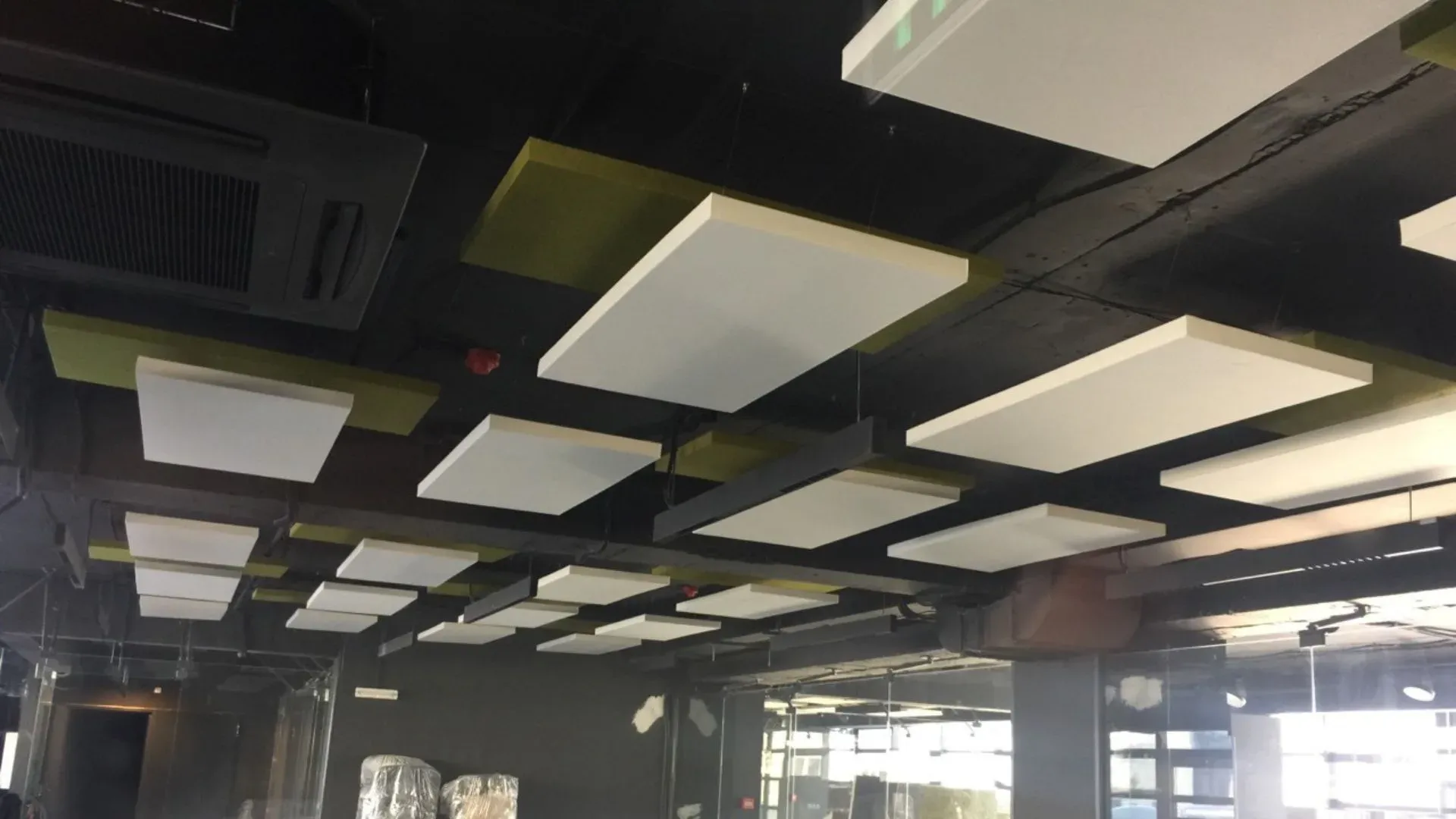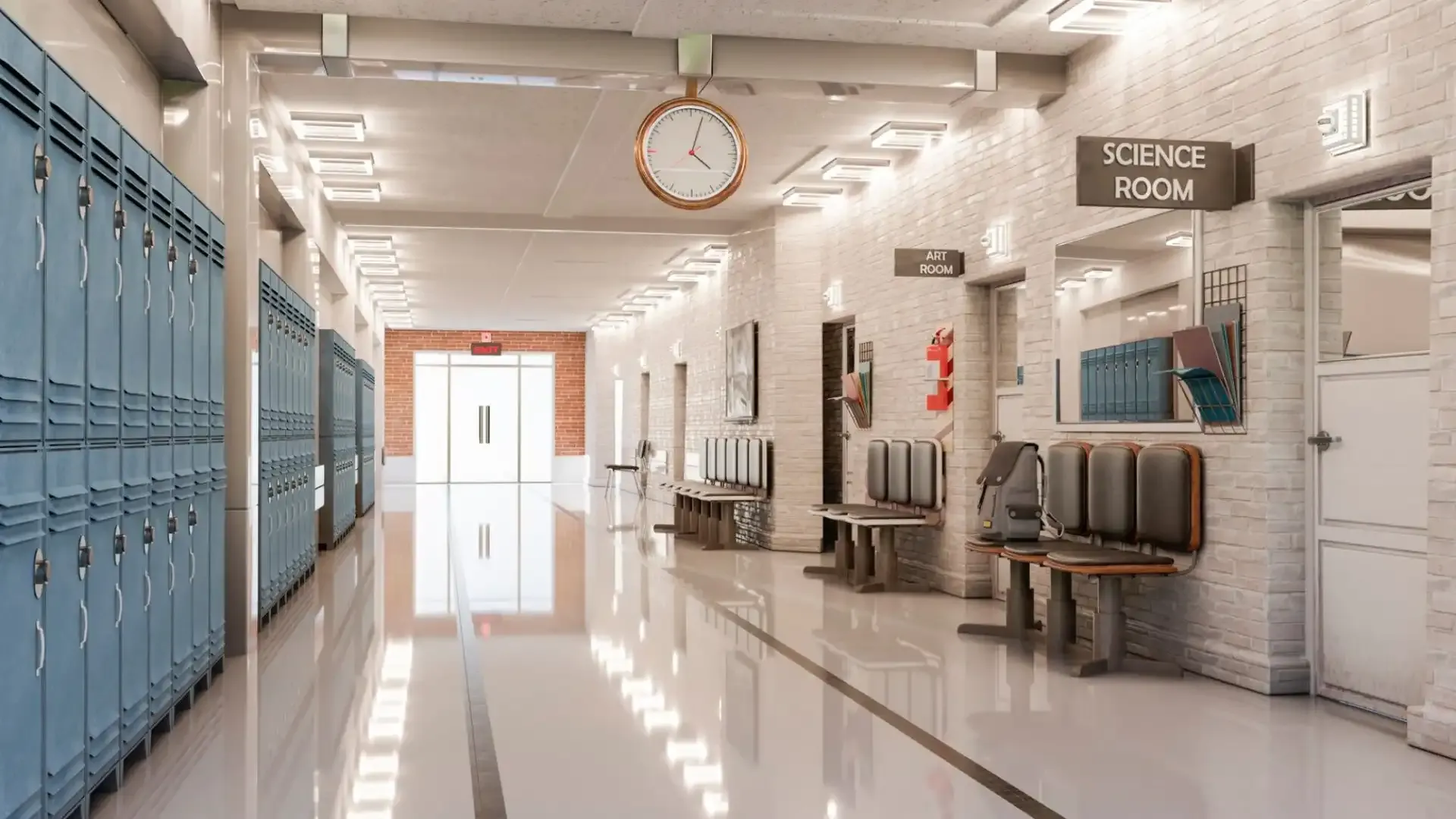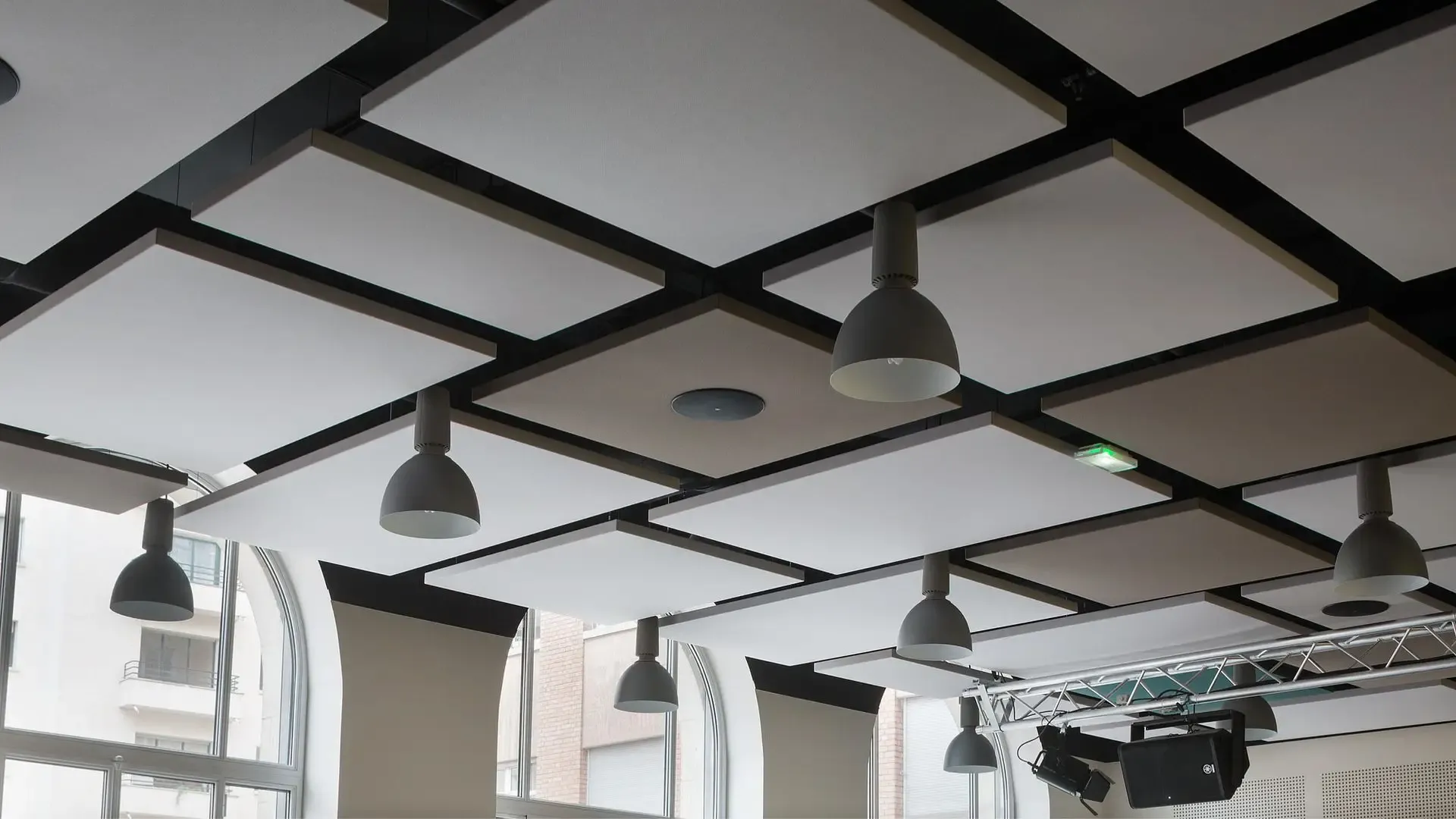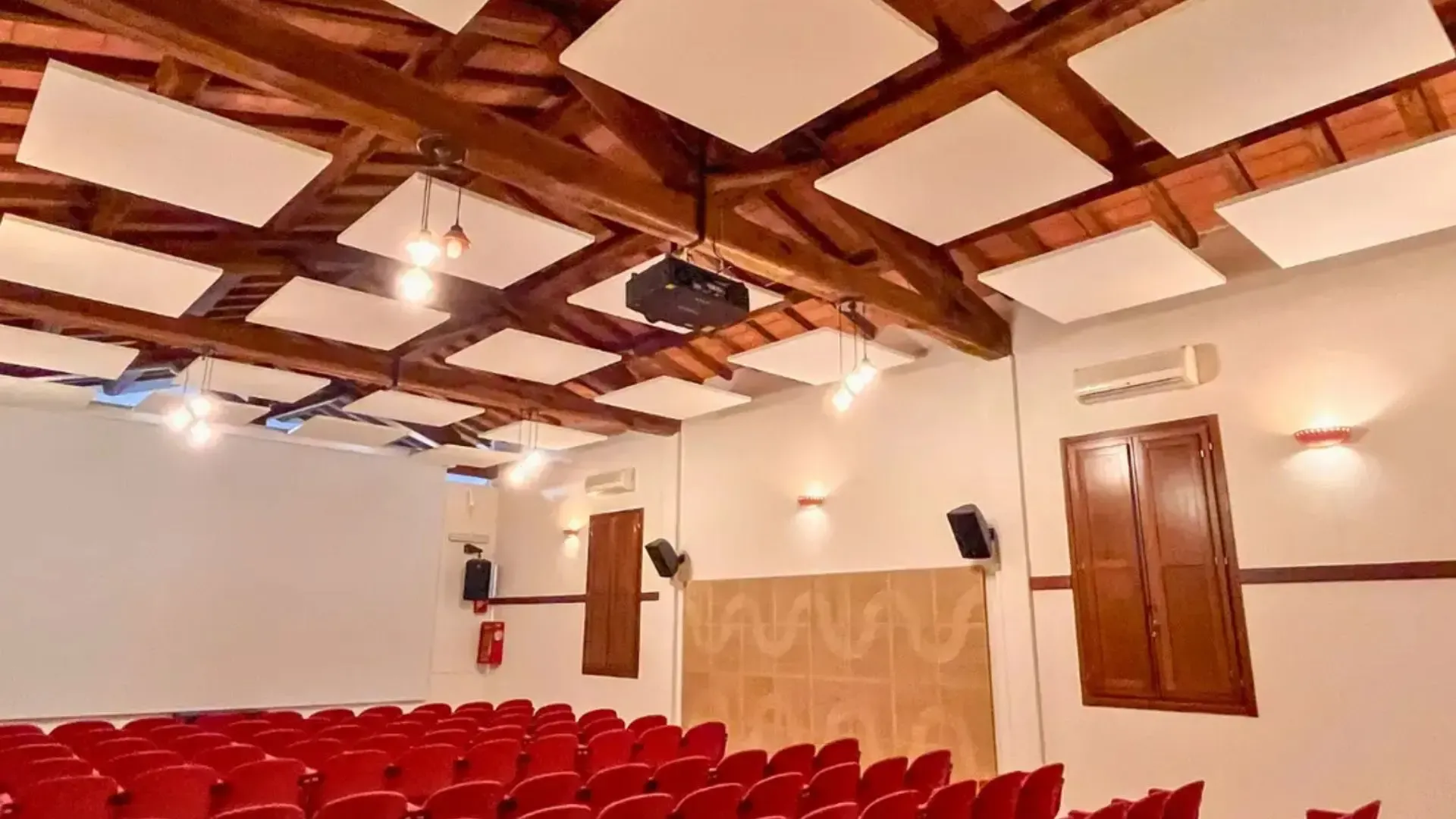The Critical Role of Acoustics in Modern Educational Facilities
When we talk about what makes a school effective, the usual suspects appear: curriculum design, teacher quality, class size, digital tools, lighting, and air quality.
Yet one crucial element remains consistently under-addressed: acoustic design! And that’s a problem, because sound plays a foundational role in how students absorb, retain, and engage with information.
Sound vs. Noise: Not Just a Volume Issue
One of the most persistent misconceptions in school planning is the idea that keeping classrooms "quiet" is enough. In reality, quiet is not the same as intelligible. A room can be low in decibels but high in reverberation or echo, causing speech to become smeared or distorted.
What matters is the acoustic quality. This is especially critical in early education, where language acquisition is still developing, and in secondary education, where cognitive load increases dramatically.
Modern educational facilities are complex ecosystems. They must serve diverse functions (learning, socialising, performing, eating), support a wide range of learners (including neurodivergent and hearing-impaired students), and meet stringent health and safety standards.
Yet acoustic performance is often siloed. Treated as a late-stage fix with panels or tiles rather than a design priority from day one. This fragmented approach leads to inconsistent results, retrofit expenses, and poor outcomes for learners and teachers.
Creating high-performance educational spaces requires integrated design thinking. Architects, acoustic engineers, mechanical consultants, psychologists, and pedagogical planners must collaborate from the outset to ensure that acoustic goals align with educational goals.
The Science: How Acoustics Affect Cognitive Function and Behaviour
The connection between sound environments and learning outcomes is backed by decades of research in cognitive psychology, audiology, and building science.
In educational settings, where spoken language is the primary medium of instruction, acoustic conditions have a direct impact on how effectively students perceive, process, and retain information.
Speech Intelligibility and Memory Retention
The cornerstone of any educational space is speech intelligibility: the ability for students to clearly hear and understand spoken words. Even slight degradation in intelligibility can impair working memory, the mental system responsible for holding and manipulating new information.
According to cognitive load theory, the brain has limited processing capacity. When students must exert extra effort to decipher unclear speech due to poor acoustics, background noise, or echo, they consume cognitive resources that would otherwise be used for comprehension and memory formation. This leads to:
- Lower retention of new material
- Increased need for repetition and clarification
- Decreased overall learning efficiency
The effects are cumulative. A 10% drop in intelligibility doesn’t mean missing just one word. It means falling behind in understanding entire concepts over time.
Reverberation, Distraction, and Mental Fatigue
Excessive reverberation time (RT60), the persistence of sound after the source has stopped, leads to acoustic smearing. Instructions blur together. Class discussions become unintelligible. Students have to "fill in the blanks" through guesswork or disengage entirely.
This sensory overload contributes to mental fatigue, irritability, and even behavioural problems. In high-reverberation spaces, teachers often need to raise their voices just to be heard, leading to vocal strain and burnout.
Can you imagine trying to learn something new while listening to noise all day, and being surrounded by 25 other students like you, all talking and interrupting? For many, that is how a class looks.
The impact is not limited to the classroom. Shared spaces like cafeterias, corridors, and sports halls with poor acoustic control raise baseline stress levels, making transitions between lessons more chaotic and reducing emotional regulation in both students and staff.

Acoustic Standards for Educational Facilities
Creating effective learning environments demands measurable, standardised acoustic performance. Across jurisdictions, regulations and best-practice frameworks have been developed to ensure that classrooms, lecture halls, and common areas support clear communication, cognitive comfort, and equitable access for all learners.
BB93 (UK): Acoustic Design of Schools
In the UK, the Building Bulletin 93 (BB93) is the definitive guidance for acoustic performance in new and refurbished schools. It sets mandatory targets for:
- Reverberation time (RT60): Typically ≤ 0.6 s for general classrooms
- Indoor ambient noise level: ≤ 35 dB LAeq,30min
- Sound insulation between rooms and corridors: Minimum DnT,w + Ctr values depending on room use
- Speech intelligibility: Adequate STI (Speech Transmission Index) for rooms used for verbal communication
BB93 is statutory for state-funded schools under UK Building Regulations and is often a precondition for public funding approval. Failure to comply can result in planning delays, withheld certification, and costly remediation.
ISO 3382-2: Reverberation in Ordinary Rooms
Globally, the ISO 3382-2 standard provides the method for measuring RT60 in non-specialised rooms like classrooms and offices. It defines how to calculate reverberation time using interrupted noise and decay slope analysis across octave bands.
Why it matters: ISO 3382-2 is essential for verifying post-construction compliance and for certifying acoustic upgrades in international education projects. It allows direct comparison across building types, geographies, and acoustic interventions.

Target Values: What Good Looks Like
Here are common benchmarks drawn from international standards:
|
Parameter |
Recommended Value |
|
RT60 (General Classrooms) |
≤ 0.6 seconds (primary), ≤ 0.8 seconds (secondary) |
|
Ambient Noise Level |
≤ 35 dB LAeq,30min |
|
STI (Speech Intelligibility) |
≥ 0.75 |
|
Sound Insulation (DnT,w + Ctr) |
≥ 45 dB (between teaching and non-teaching spaces) |
Targets may vary based on country, room type, and student population (e.g. lower RT60 for hearing-impaired classrooms).
Legal and Funding Implications
Compliance with acoustic standards is a legal and operational requirement:
- Building Regulations (e.g. Part E in the UK) mandate acoustic separation and internal sound control.
- SEND frameworks (Special Educational Needs and Disabilities) require that facilities accommodate students with auditory and sensory processing differences.
- Health and Safety obligations demand noise levels that do not induce stress or contribute to staff burnout.
- Public funding criteria in many countries require certified compliance with acoustic standards prior to final disbursement or project approval.
Common Acoustic Pitfalls in School Design
Despite advances in educational architecture, many school facilities continue to suffer from acoustical oversights that compromise teaching, learning, and student well-being. These problems often stem not from cost-cutting but from poor integration between design intent and acoustic performance requirements.
Overuse of Reflective Surfaces
School architecture often favours glass, concrete, and tiled finishes for their durability and aesthetics. Unfortunately, these materials are highly reflective to sound, creating long reverberation times and poor speech intelligibility.
In classrooms, this leads to:
- Smearing of speech signals
- Difficulty following instructions, particularly for younger and neurodivergent students
- Increased vocal strain for teachers
Without adequate absorptive treatments, these finishes directly contradict the recommended RT60 values outlined in BB93, ISO 3382-2.
Open-Plan Classrooms and Multipurpose Zones
Flexible, open-plan learning environments are widely embraced for encouraging collaboration and creative pedagogy. But acoustically, they present significant challenges:
- Noise leakage between teaching zones
- Competing speech sources from different groups
- No clear sound boundaries to define focus areas
In such spaces, even modest background noise can degrade the Signal-to-Noise Ratio (SNR), a key determinant of speech intelligibility and student attention. Effective zoning, absorptive ceiling and wall treatments, and acoustic screens are essential to avoid turning these areas into continuous low-level stressors for both staff and students.

Shared Walls and HVAC Systems
Partition walls between classrooms and adjoining spaces (e.g. toilets, corridors, offices) are often designed for visual or thermal separation, but not for sound insulation. Weak flanking paths and poorly sealed junctions allow:
- Airborne noise (voices, music, movement)
- Structure-borne noise from HVAC, plumbing, or equipment vibration
- Cross-contamination between “quiet” and “active” zones
HVAC systems in particular are a silent saboteur: duct-borne fan noise, low-frequency rumble, and grille turbulence can all exceed ambient noise limits without being immediately obvious. Until compliance testing fails or complaints rise.
Lack of Acoustic Zoning
Inadequate spatial separation of quiet and noisy activities is a systemic issue in many educational buildings. Common mistakes include:
- Placing SEN support rooms next to music classrooms
- Locating libraries adjacent to canteens or gyms
- Using single-glazed interior partitions without seals
Without clear zoning strategies during the planning phase, schools become sound-permeable environments. The result is chronic distraction, heightened stress for sensitive students, and decreased teaching efficiency.
Designing for Performance: Acoustic Strategies
Achieving optimal acoustics in educational facilities requires a holistic design strategy that considers surface finishes, room geometry, material specifications, and user behaviour. When planned early, acoustic design supports educational outcomes, staff wellbeing, and long-term operational efficiency.
Ceiling Treatments: The First Line of Control
In most learning environments, ceilings are the largest uninterrupted surfaces, making them ideal targets for sound absorption. Key solutions include:
- Class A acoustic ceiling tiles: Commonly mineral fibre or polyester-based; effective at controlling mid-to-high frequency reflections crucial for speech intelligibility.
- Suspended baffles and acoustic clouds: Particularly beneficial in high-volume spaces like sports halls, canteens, and assembly areas where ceiling height amplifies reverberation.
These ceiling treatments help achieve BB93 targets for RT60 (Reverberation Time) without disrupting mechanical or lighting systems.

Wall-Mounted Absorbers and Soft Surfaces
Vertical surfaces are equally important, especially in classrooms and corridors where lateral reflections cause speech smearing and echo. Effective strategies include:
- Broadband wall absorbers placed at ear level around the room perimeter
- Corner bass traps in music rooms and performance spaces, targeting low-frequency build-up
- Upholstered surfaces, notice boards, and fabric-wrapped acoustic panels for additional absorption without reducing usable space
For schools serving neurodivergent learners or students with special needs, tactile and visual design of acoustic panels can also provide sensory comfort.
Doors and Windows: Seal the Weak Points
Even well-treated rooms can fail if doors and windows are not acoustically rated. They remain major leakage points for both airborne and flanking noise.
- Sound-rated doors should have drop seals, magnetic gaskets, and solid-core construction
- Glazed partitions must use laminated acoustic glass and double frames where observation is required (e.g. in SEN or music rooms)
- All installations should include air-tight framing systems to prevent flanking paths through gaps or rigid junctions. Correct detailing during installation is just as important as the spec itself.

Planning Layout and Managing Traffic
The layout of rooms and circulation spaces has a direct impact on background noise levels and the effectiveness of acoustic interventions. Key layout considerations:
- Avoid clustering quiet zones (e.g. therapy rooms, libraries) near active zones (e.g. gyms, canteens)
- Separate student traffic corridors from classrooms using buffer zones or acoustic lobbies
- Use soft flooring, such as acoustic vinyl or carpet tiles, in corridors and breakout zones to reduce footfall noise
Circulation design is a critical acoustic tool in open-plan schools or where large cohorts move simultaneously.
Custom Solutions for Specialist Spaces
Different areas in a school demand tailored acoustic responses:
- Libraries require high Speech Transmission Index (STI) values for speech clarity, but low reverberation for focused reading
- Auditoriums benefit from diffusive panels that scatter rather than absorb sound, enhancing musical performance and spoken word
- Music rooms and rehearsal spaces must manage both soundproofing (to prevent bleed) and internal control of frequencies across the audible range
- SEN classrooms need low-stimulation environments, with reduced reverberation and soft finishes to avoid triggering sensory overload
These environments often require modelling during design stages, supported by on-site testing and fine-tuning after installation. We can also provide a tailored acoustic simulation, allowing clients to gain an understanding of how sound will behave before installing a single panel.

Operational Considerations: Maintenance, Upgrades, and Retrofits
Acoustic performance must coexist with the daily realities of school operation. Surfaces need to be durable, hygienic, and easy to maintain, especially in high-traffic or shared areas.
Modern acoustic panels now come with washable finishes, impact resistance, and anti-microbial coatings, making them suitable even for classrooms of younger generation students or canteens.
For existing buildings, acoustic audits provide a data-driven basis for intervention. These should be scheduled:
- During or just after peak occupancy (to capture real noise conditions)
- Every 3–5 years, or after significant layout changes or refurbishments
- With qualified acousticians using calibrated RT60/STI measurement tools
Investing in acoustic quality pays off through:
- Reduced teacher vocal strain and associated absenteeism
- Improved student behaviour and academic outcomes
- Stronger parental trust in the school environment
Sound matters, both as a building material and as a message. Schools that sound better perform better. Get in touch for professional acoustic treatment of your educational facility!



